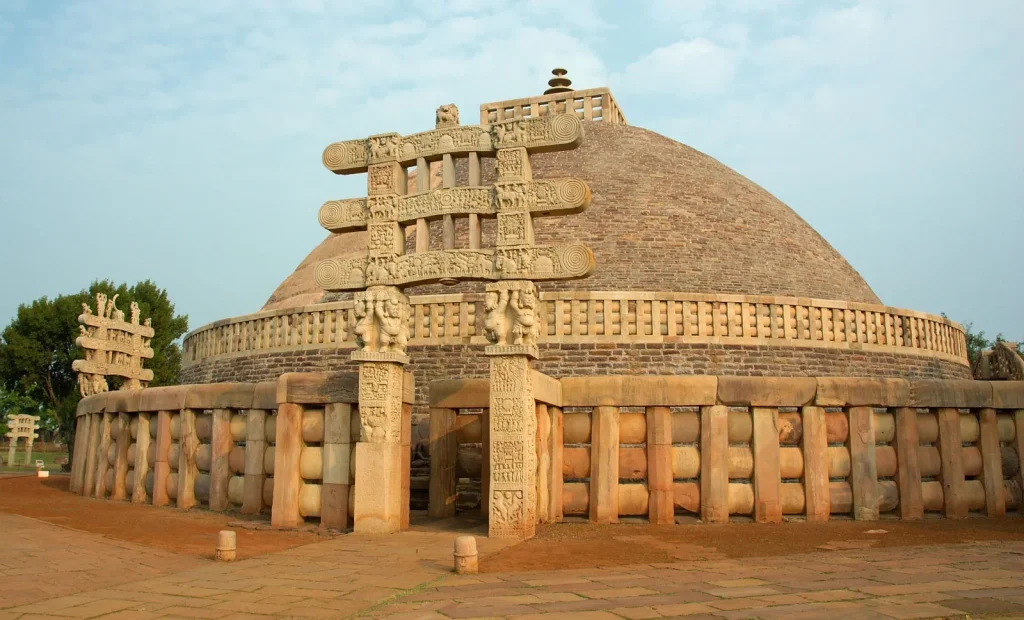Context:
Recently, the Great Stupa of Sanchi has gained renewed attention with the unveiling of a replica of its East Gate at the Humboldt Forum Museum in Berlin.
More on the News:

- This reproduction, made of red sandstone in a 1:1 ratio of the original, stands nearly 10 meters high and 6 meters wide and weighs approximately 150 tonnes.
- The original East Gate has been pivotal in studying Buddhist art and architecture.
About The Great Stupa of Sanchi:
- A stupa is a Buddhist monument built to commemorate and often house sacred relics of the Buddha or revered saints. The typical stupa features a hemispherical design, with origins rooted in pre-Buddhist burial mounds from India.
- The Great Stupa is one of the oldest and largest stone structures in India. It was commissioned by Emperor Ashoka in the 3rd century BCE to house the relics of the Buddha.
- It is Located at Sanchi, near Vidisha, Madhya Pradesh.
- It symbolizes the Buddhist faith and has been a focal point for worship and pilgrimage.
- The stupa’s hemispherical dome represents the cosmic mountain, and its architecture has evolved over centuries, with significant additions made during the Sunga and Gupta dynasties.
- The site, recognized as a UNESCO World Heritage Site in 1989, offers invaluable insights into the genesis and development of Buddhist art.
Gateways of the Great Stupa:
- The Great Stupa is adorned with four toranas (gateways), masterpieces of ancient Indian art.
- The four toranas, oriented to the four cardinal directions, were constructed in the first century BCE, likely within a few decades of each other during the reign of the Satavahana dynasty.
- Each gateway consists of two square pillars supporting three intricately carved architraves.
- These gateways depict various scenes from the Buddha’s life and Jataka Tales, showcasing exquisite craftsmanship and symbolic representations of Buddhist teachings.
- The East Gate, in particular, has become iconic, with its detailed reliefs capturing the essence of Buddhist iconography.

